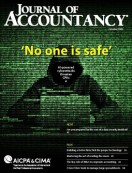- newsletter
- Extra Credit

Make your classes more accessible to everyone
A few small changes can help you reach students with and without disabilities.
Please note: This item is from our archives and was published in 2021. It is provided for historical reference. The content may be out of date and links may no longer function.
Related
The Excel Advanced Filter function gives you flexibility
The abilities employers seek from accounting graduates
Teach students tech (and more) with award-winning assignments
TOPICS
When it comes to teaching accounting, being inclusive helps ensure you’re providing the best opportunity for all students to learn.
Class design can sometimes inadvertently exclude students with disabilities or different learning needs, said Katie Novak, Ed.D., founder of Novak Education Consulting and co-author of the book Equity by Design: Delivering on the Power and Promise of UDL. When faculty design learning experiences that are “one-size-fits-all,” not all students may have the same opportunities to reach course outcomes, she said.
A video without captions won’t reach someone who can’t hear. Lectures may not be ideal for students who struggle with auditory processing or attention. Written tests may not allow every student to shine under pressure. But things are changing.
“We do things differently now because we want to reach all students,” said Elizabeth Atkinson, director of accessibility services at Husson University’s Center for Student Success in Bangor, Maine.
Educators increasingly favor inclusive or universal design for learning (UDL) because it gives more students the opportunity to succeed. Instructors recognize and respect that students have different needs, abilities, temperaments, and motivations that affect how they study, learn, and show what they’ve learned, and they’re reflecting that in their teaching practices.
Inclusive design can benefit many types of students, not only those who have an impairment, said Dick Walstra, DBA, an assistant professor of accounting at Dominican University in River Forest, Ill. “That can include so many groups: international students with language barriers, veterans with PTSD, and first-generation students who don’t know the ins and outs of higher education,” he said. For instance, adding captions to videos helps students with hearing loss, but also those whose first language is not English, or who just prefer to read as they watch.
What’s more, starting with an inclusive design makes it easier for faculty to adapt if a student with a disability enrolls in one of their courses. “You never know who’s going to come into your classroom,” Atkinson said.
Here are some ways to help make your classes more inclusive:
Make sure your materials are accessible. As you map out a semester or module, consider incorporating every diverse need of your in-person or online class to ensure everyone can understand each piece, Atkinson suggested. For example, do your videos have captions to help students who can’t hear, and do you describe images for those who cannot see? “Thinking about accessibility from the design standpoint means that your class is going to be welcoming to all types of learners,” Atkinson said.
Learn more. Walstra recommends that faculty who want to make their classes more accessible to everyone read the book Reach Everyone, Teach Everyone: Universal Design for Learning in Higher Education by Thomas Tobin and Kirsten Behling, and the UDL guidelines on the website CAST.org. (CAST is the organization credited with first developing the concept of UDL.) Atkinson recommends the publication Universal Design in Higher Education and the website UDL on Campus.
Be open and flexible. Learn what services your university offers to students with disabilities, and, if you have questions about accommodations, don’t hesitate to ask them. And remember that there are many types of disabilities, including mental health, Walstra said. A student can have more than one issue to deal with.
When you introduce yourself to students at the beginning of the semester, discuss the university’s support available and be clear that students can come to you for help. “They may be suffering in silence,” Walstra said. “Let them know that this is important to you and you care” and that you want to work with them to find solutions, he said.
Don’t think putting this information in the syllabus is enough, Atkinson said. Students won’t always “read the fine print,” she said, but they’re more likely to pay attention if you say it out loud.
Flip the class. When possible, avoid long in-class lectures. Instead, consider a flipped classroom approach. This method is “going to be more accessible to all types of learning,” Atkinson said. Have students complete work prior to class, which allows them to go at their own pace and revisit things that may seem unclear. Reserve class time for small-group activities, letting students learn from one another.
Reconsider how you assess students. Students with learning disabilities, or who are linguistically diverse, may not perform well on specific kinds of assessments, Atkinson said. Students with dysgraphia, for example, may not excel at expressing themselves in writing. Giving varied types of assignments over the course of the semester will give students more opportunities to shine: A student who struggles with multiple-choice exams may be great at giving presentations, for instance, or sharing a relevant video in a discussion forum.
Don’t make a test a “one-shot deal” requiring students to memorize and recall a large amount of information, Walstra said. Consider letting students take several smaller quizzes or reviews over the semester and quickly provide feedback on each one, he suggested.
When you ensure that students of all abilities learn in your class, everyone benefits, Atkinson said. “We want all the students to have the opportunity to learn, grow and succeed,” she said.
— Dawn Wotapka is a freelance writer based in Atlanta. To comment on this article or to suggest an idea for another article, contact Courtney Vien, a JofA senior editor, at Courtney.Vien@aicpa-cima.com.


















